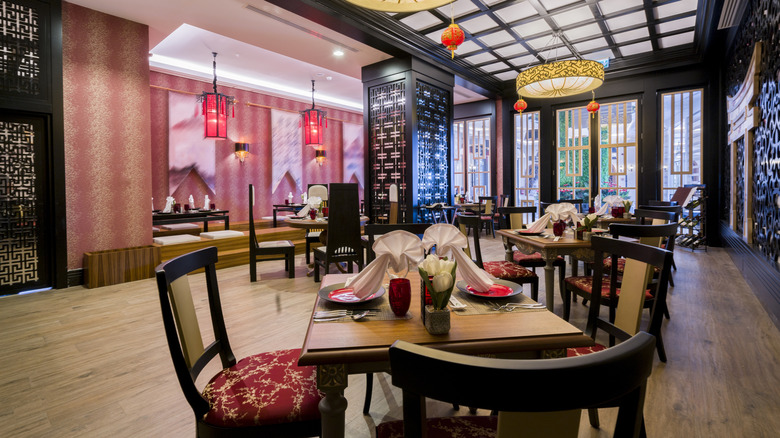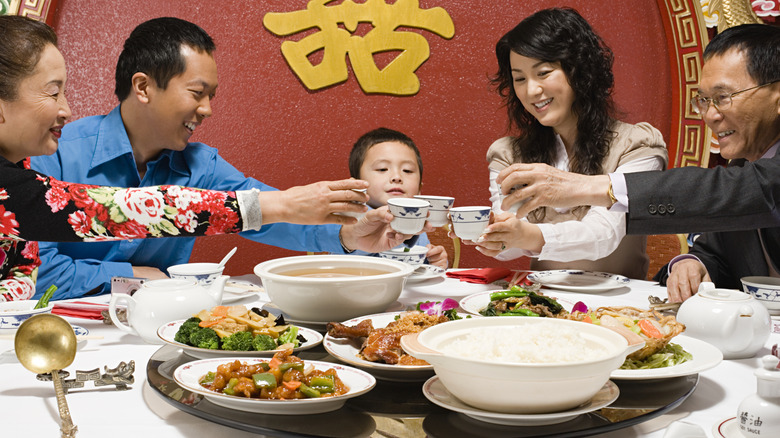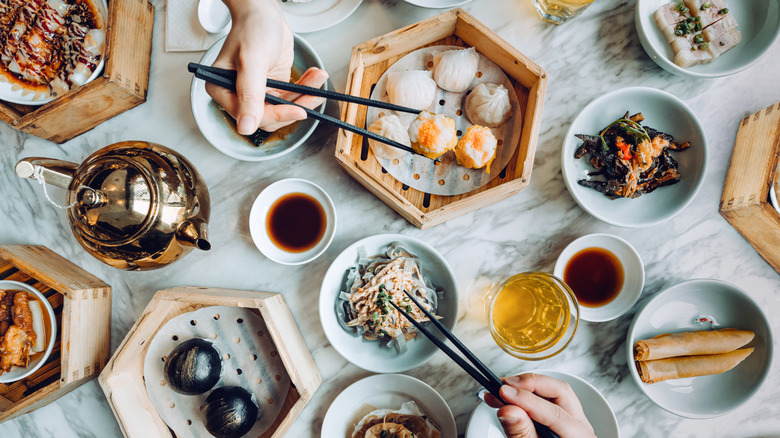The Common Ordering Mistake You're Making At Chinese Restaurants
I love Asian cuisine, and Chinese food has always been there for me — an under-appreciated companion that I learned to love properly in adulthood, especially on days I don't feel like cooking. I remember ordering food with my family as a kid, and each person would get their own dish and we'd eat separately without a second thought. I now know the error of our ways, and with my own family, I possess the attentiveness to do Chinese the right way! No more aimless orders without a purpose or plan ... you have to be intentional. Settling for only one entrée every time you visit a Chinese restaurant is just plain wrong, and when you know better, you do better!
Half the joy of eating Chinese is sharing the litany of dishes with friends and family. Along those same lines, did you know that traditional meals at Chinese restaurants are designed for group dining, where everyone orders a few delicious items to create a smorgasbord of balanced flavors, textures, and aromas? They say it strengthens social bonds in our communities and highlights our need for human connection.
By sticking to a single dish, you're missing out on the full experience. Think about it ... you could enjoy the crispy perfection of General Tso's chicken while you delight in the spicy depth of mapo tofu, all while pairing them with a teriyaki-infused vegetable stir-fry. With this approach, you get the best of all worlds without the letdown of having to commit to just one.
And guess what? It's cheaper! Splitting a variety of plates with friends or family gives you the chance to sample everything without overspending. So, the next time you head to your favorite Chinese spot, grab a few friends, order a variety of dishes, and have at it.
Sharing enhances the experience
Communal dining may take some getting used to, but when you do come out of your shell a little bit, you'll see that it's a whole vibe. It's different from what we're used to here in the States and the Western style of eating in general, where everyone orders their own dish. Communal dining involves placing a variety of dishes in the middle of the table for everyone to share. I'll say from my personal experience that you have to be with a group of easygoing people who really want to be around one another and will get into the fun of passing dishes around and trying a little bit of everything. One of the biggest benefits of this style of dining is that it's perfect for discovering new favorites and trying foods that you would've never thought to order for yourself.
To master the art of ordering at a Chinese restaurant, start by embracing variety. Go for a mix of protein, vegetables, and starches to create a balanced meal. Think crispy spring rolls, a rich pork belly dish, a bright vegetable stir-fry, and, of course, rice or noodles to tie it all together.
If you're unsure what to order, don't hesitate to ask your server for recommendations. Many dishes are family recipes or regional specialties, and the staff can guide you to the must-tries. Here's a true pro tip: Pick dishes served in larger portions — it's easier to share, and no one has to worry whether or not the portion will be enough for the group. And don't you dare skip appetizers like dumplings or soup; they absolutely set the tone for the meal.
A classic example of Chinese communal dining is a hot pot meal. It consists of a big simmering pot of broth in the middle of the table, surrounded by plates of thinly sliced meat, fresh veggies, and noodles. Everyone dips their ingredients into the broth, cooks them to their liking, and enjoys them with dipping sauces. It's a hands-on, interactive experience that makes the meal even more memorable. Sharing food truly makes it taste better, and I stand on that!
How to enjoy Chinese cuisine according to tradition
If anyone is particularly interested in Chinese communal dining like it's done according to tradition, you'll want to know the standard practices. They're not obligatory, but just a suggestion and a really cool way to dine with loved ones. One unique aspect is that there's usually a particular order or etiquette to follow during your time enjoying a meal together, and it's rooted in respect and tradition. For instance, when dining in a formal or traditional setting, dishes are generally served in a specific sequence, starting with cold appetizers, followed by soups, main dishes, and then desserts or fruit to end the meal.
An important rule is to respect the elders or honored guests at the table. They are usually served first as a sign of respect. It's also polite to take small portions at first to make sure that everyone has a chance to try each dish before going back for seconds. Using the communal chopsticks or serving utensils instead of your own is another common practice to maintain hygiene and respect. At the table, even the seating arrangement can carry meaning. The most important guest typically sits facing the entrance, and everyone else gets seated according to their relationship or rank.
For example, during a banquet, a host might begin by toasting the table, signaling that the meal can officially start. These customs reflect the value of harmony, respect, and togetherness in Chinese culture. Essentially, the goal isn't just to sit and eat together; there should be a shared experience where everyone feels included and respected.


